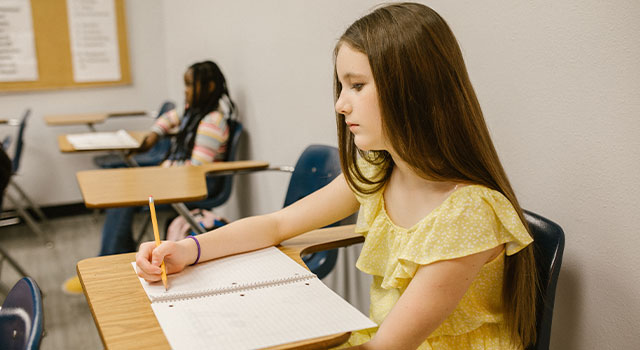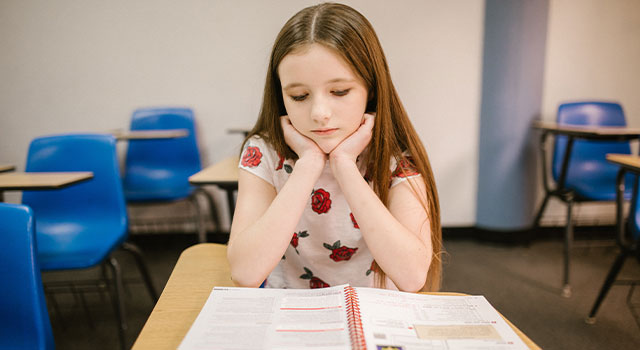
Vision Problems and Autism
Autism spectrum disorder (ASD) is a range of childhood developmental conditions characterized by social, behavioral and communication deficits. About 1 in 54 children are affected by autism spectrum disorder (ASD), according to the Centers for Disease Control’s Autism and Developmental Disabilities Monitoring (ADDM) Network. The condition is more prevalent in boys than it is in girls.
Many people with ASD experience a range of problems with their visual system. It has been observed that some infants as young as 2-6 months of age — who are later diagnosed with ASD — are unable to make eye contact with people. Furthermore, research shows that children with ASD present with a 21-50% higher incidence of strabismus (or eye turn) compared to children without ASD.
Below we’ll delve into more problems with visual processing among those with ASD and explain how vision therapy can help them improve their vision skills.
Eye Exams in Children with Autism
While vision problems are common in children with autism, they can often go undiagnosed. It is crucial for parents to understand that children with ASD need to have regular eye exams in order to assess their ocular health, visual skills and vision acuity.
[Eye doctors] recommend that children with autism undergo a functional visual evaluation in order to assess their visual skills and many other important aspects of the visual system, including:
- Eye movements
- Eye teaming
- Eye-tracking
- Convergence
- Visual processing
- Visual-spatial judgment
- Central/peripheral vision
Common Visual Problems and Behaviors Among Those With Autism
Vision problems, particularly visual-spatial misperceptions related to how bodies and objects move through space, can cause a child with ASD to feel anxious, confused, or distressed—resulting in certain behavioral responses.
As you’ll see in the list below, many autistic behaviors may seem unrelated to vision problems, when in truth, some may actually be caused or exacerbated by poor visual skills.
- Poor eye contact
- Looking beyond/through objects
- Extreme fear of heights or an absence of appropriate fear of heights
- Inability to accurately track moving objects.
- Problems with eye alignment (eye turns)
- Amblyopia/lazy eye
- Light sensitivity
- Head-turning (looking at objects from the side of the eyes)
- Rolling eyes
- Visual stimming (flapping fingers in front of eyes)
Vision Therapy for Children with Autism
Vision therapy is a highly effective, personalized treatment method designed to enhance visual skills and the neurological connections between the eyes and brain. A vision therapy program for a child with ASD will facilitate improved visual processing, enabling them to better understand their surroundings. This, in turn, can lower their anxiety and boost their ability to verbalize and socialize. Each therapy program is custom-fit to the specific needs of the child, and includes age-appropriate exercises and activities.
Common vision therapy goals for children with ASD include the improvement of:
- Visual-spatial organization
- Binocular vision
- Eye-tracking
- Focusing
- Visual information processing
If your child has autism and displays behaviors that may be associated with a vision condition, contact Visual Symptoms Treatment Center to schedule a comprehensive functional eye exam for a proper diagnosis. We will prescribe a vision therapy program to help improve the quality of your child’s vision and, consequently, his or her quality of life.
How Prism Lenses (Yoked Prisms or Ambient Prisms) Help
Prism lenses help autistic children use their vision in a way that impacts other aspects of their well-being. For example, prisms can create immediate improvements in posture, balance and attention —significantly increasing the child’s feelings of physical safety and comfort, while decreasing anxiety, sensory overload and more.
Prism lenses can be worn daily or just for the duration of a vision therapy program, and often produce significant visual improvements.
How We Can Help
Vision therapy is an evidence-based program clinically proven of many decades to be effective in developing critical neuro-visual skills in patients with autism. For optimal results, vision therapy should be an integral part of any interdisciplinary approach to improve the patient’s ability to function and quality of life.
At Visual Symptoms Treatment Center, Dr. Neil Margolis will provide your child with a program suited to his or her unique abilities and needs. Our goal is to help those with autism spectrum disorder perform daily tasks with ease, while diminishing the burden on themselves and those around them.
Our practice serves patients from Arlington Heights, Buffalo Grove, Northbrook, and Deerfield, Illinois and surrounding communities.









